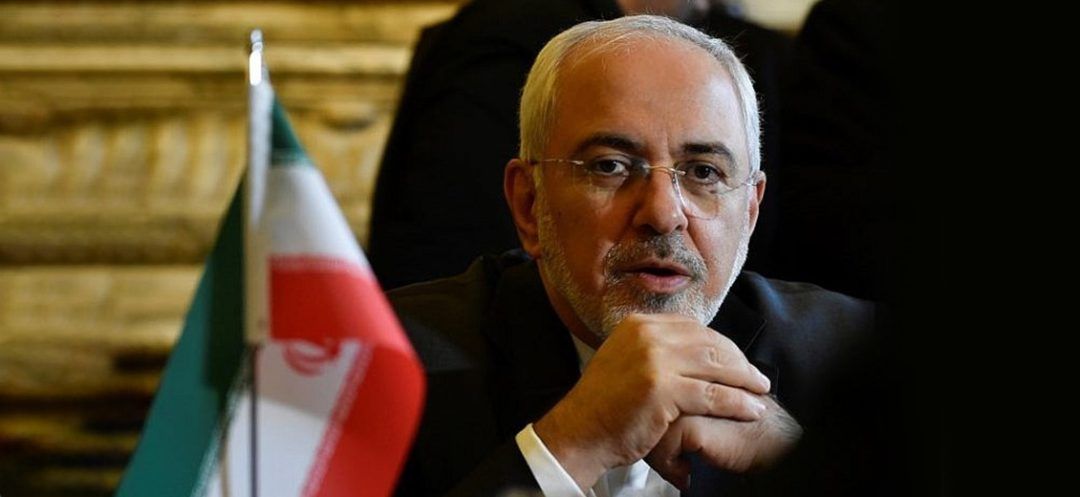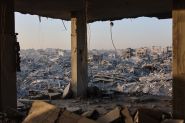- Home
- Arab World
- Editorial - Iran: A Telltale Sign

©(John Thys / AFP)
This piece of information almost slipped under the radar… Yet, it holds significant symbolic value and could indicate a recent political shift in Iran. On August 27, former Iranian Foreign Minister Mohammad Javad Zarif announced that he was withdrawing his resignation from his position as Vice-President for Strategic Affairs. He had been appointed to this position by the reformist President Massoud Pezeshkian, who immediately tasked him with forming a committee of experts to suggest candidates for the new government.
Zarif, in his new capacity, advocated for the inclusion of women, young individuals, and representatives from various ethnic and religious minorities, including Sunnis, aiming to infuse the "new government" with a reformist ethos and a more global perspective.
However, the former foreign minister's proposal met with little to no support, and the government continued to be predominantly influenced by the hardline conservative faction. Faced with this opposition, Zarif chose to step down just ten days after his appointment, on August 12.
On August 27, in a surprising turn of events, Mr. Zarif withdrew his resignation and resumed his activity as Vice-President for Strategic Affairs. Despite his reinstatement, the former foreign minister has been the target of an intense campaign by the Islamic Revolutionary Guard Corps (IRGC) since his appointment by Massoud Pezeshkian.
The tensions between the new Vice-President and the IRGC are far from new; they date back at least a decade, or even longer, notably to the period of the nuclear negotiations between 2013 and 2015, when Zarif was leading Iran’s diplomatic efforts.
The Revolutionary Guards accuse the former foreign minister of being overly accommodating toward the American administration, even suggesting that he was too close to the United States and crossed certain red lines during the negotiation of the 2015 nuclear deal. Mr. Zarif’s conflict with the IRGC escalated in April 2021 when he openly criticized Qassem Soleimani and the leadership of the Revolutionary Guards. In a public statement, he went as far as to accuse them of covertly undermining and attempting to sabotage his negotiations with Western officials. In response, Supreme Leader Ali Khamenei condemned Zarif’s comments about Soleimani in May 2021, calling them a "serious mistake."
However, this dispute goes beyond mere political disagreements and extends to personal matters as well. Prominent figures within the radical camp have highlighted that Mr. Zarif’s two children hold American citizenship. They also likely recall that Zarif spent a significant portion of his life in the United States, beginning in 1976, where he pursued his university studies in San Francisco. Furthermore, his tenure as Iran’s ambassador to the United Nations from 2002 to 2007, combined with his collaboration with Washington in establishing the pro-American government of Hamid Karzai in Afghanistan, adds fuel to the criticism.
Such an unequivocal background undoubtedly explains the staunch opposition of the Pasdaran to Zarif's appointment as Vice-President, leading to his resignation on August 12. Given this context, one might wonder how Zarif could have reversed his decision just two weeks later, and why the so-called "ultra-conservative" faction suddenly overlooks its substantial grievances. The answer likely lies in Ali Khamenei’s statement made on August 27, the very day Zarif was reinstated. Khamenei called for the renewal of negotiations with the United States on the nuclear issue, suggesting a strategic shift that could have influenced the sudden change in Mr. Zarif’s situation.
Of greater significance is the statement made by the Iranian president on Sunday, September 1. He called for a revival of foreign investments and an "opening to the outside world," explicitly stating that Iran needed "$100 billion in foreign investments." This new emphasis on economic engagement and reform could very well be linked to both the Supreme Leader's and the President's positions and Zarif’s unexpected return. This connection is a small but compelling step that many observers have readily noted.
Yet, the disparity between rhetoric and reality remains substantial. Has the radical Pasdaran faction chosen to momentarily ease its vocal opposition to the new Vice-President in order to "calm" the US administration and facilitate the lifting of sanctions? This move could potentially provide the Iranian regime with the $100 billion in foreign investments advocated by Massoud Pezeshkian. Once this financial lifeline is secured, could the Pasdaran redirect their attention to their ideological mission of exporting the Islamic Revolution and reigniting their hegemonic and destabilizing efforts in the region? Given the radical faction's history over the past four decades, this question remains highly relevant.
Read more





Comments